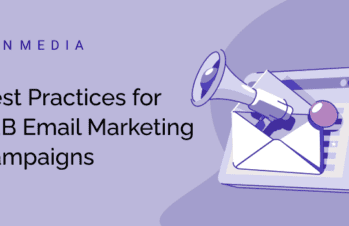Everyone’s talking about using social media networking to increase their profits. Traditional strategies like email marketing are being slammed for ‘hipper’ strategies like using Twitter and Facebook. However, lots of companies still use email marketing no matter how cumbersome or ‘un-hip’ it may seem. From getting people to buy eBooks to getting people to sign up for auto-shipping programs for slimming pills, the humble email is still the number 1 choice of those who are just entering the wild world of niche marketing, etc. and for those who have been in this business for a long time.
Spam laws matter
There are two sets of international laws on spam emails. One is for the United States and the other is for Europe. In the United States, there is the federal legislation for spam and there are also state regulations for spam. It would be best if you can take into consideration these existing laws just to be safe. You can’t be too careful, because CAN-SPAM laws are in force and are funded.
What makes an offer, an email course or a ‘hard-sell’ email spam? First, if the sender of these materials does not provide a basic ‘unsubscribe’ or ‘opt-out’ option in the email, which can immediately qualify the email as spam. Why would you send someone unsolicited mail if they can’t unsubscribe? That’s already forcing someone something they won’t even read. The content of newsletters also matter. If a newsletter looks like it’s been written by a troubled fifth grader, then would people want to read it? No, people would rather have something else on their personal mailboxes, like emails from friends and their bosses. Certainly not a newsletter with grammatical errors and senseless content.
It’s quite easy to follow the basic rules of CAN-SPAM. First, identify yourself adequately in the Sender box. Next, include the physical address of your company or organization. Third, make sure people can stop your emails from coming. Write the unsubscribing information on the bottom of the email, but make sure you include it. If you don’t, you might be fined $11,000. And that’s for every time you commit such a mistake!
Opting-in matters, too (a lot)
Well you know, you can just send your emails to tens of thousands of people right? Some companies are still doing this up to now. Well you can do that too, if you want to fill up the Spam folders of Gmail, Hotmail and Yahoo Mail. Fact is, these three are wising up with better spam filtering. Now, what would make your email, well, recipient friendly? The answer is “opt-ins”. We know you probably are laughing right now, because opt-ins is part of the ABCs of email marketing. But hey, we give everyone the benefit of the doubt. If you want to annoy people, send unsolicited email. If you want to make fat profits from selling something online, then make them opt-in for something.
Offering something to potential clients must be done with all honesty. If you want to offer infrequent sales letters so they get discounts galore on some months, then just tell them. It would be better if they choose this option for themselves. Instead of being annoyed, people would feel empowered, because hey, you gave them the choice to receive something of value when they subscribed to your mailing list.
Is there a way to make your offer even more powerful? YES.
Double opt-ins can make two things possible: first, reduce the chances of your mails being automatically junked by Spam filters and second, a double opt-in can filter out not-so-serious takers from the serious takers. By asking them to confirm their subscription, you can also take the opportunity to pitch another product or upgrade. Make your mails creative! Creativity rules in the realm of email marketing.
Why are you sending them to your homepage?
We know your homepage is one of the well-designed parts of your website, but does it really drive home your message? Does your homepage really contain the information that would get you a sale, based on the unique content of your email? Remember the basic rule of sending out emails over a period of time? Each email has to be unique but should employ different strategies in selling whatever it is you need to sell. It might be useful if you had unique landing pages based on what your emails are promising to your recipients. For example, if you offered them a money-back guarantee, the link on your email should lead to a landing page that talks about the money-back guarantee more. It’s all about efficient dissemination of information, right?
Quality is also an issue here. We know that it can be tiresome to write new information for your mailing lists. It’s not unusual for webmasters to have people rewrite things that have been sitting on their website for years already. Hey, people notice these things. If every email is mirror of the last one, what’s the point of reading these mails anyway?
Re-thinking graphic-laden emails
Most email services these days offer recipients the ability to download or ignore images – many choose to ignore them. Should you quit using graphics altogether? Not really. Visuals work very well, but you have to balance it out. 75 kilobytes is the ideal size of HTML emails with graphics.
Back to the basics of copywriting
Should copies for your emails be shorter or longer? Some people say that shorter copy works better in conveying what needs to be said. For example, “Know How To Take Care of Baby Tigers Without Being Eaten!” is definitely an eye-catching headline (and it’s only 11 words long!). How long should the email copy be? It all depends on what you are trying to sell. Some products require short copy; some need longer copy in order to sell well.
Subject lines are for nerds? Not anymore!
Every part of the email matters, not just the body of the email. If you have an insufficient sender’s address you get fined. If your subject line is lousy, you’re missing out on getting fast clicks and genuine interest in what you have to say! Now, how can you make those profit-laden subject lines? It’s easy! What’s the gist of your email offer? Are you offering discounts or bonuses? Write those down! Try to create a subject line that’s 6-8 words long. If you need to be wordier, just make sure that people can read your subject line in one breath, okay?
Learn how to link your emails with Facebook, Twitter, etc.
Online marketing is all about creating synergy. Isolating one part of your advertising campaign from the larger body can be detrimental to your efforts in building a name for yourself or your company. Twitter and other social media networking services can be avenues of fast information relays. But you have to make sure that what you’re saying on your emails are also connected with what you are saying on Twitter. For example, an ideal link to your Twitter page would be “Liked the 10% discount here? Get more discounts and freebies. Follow us on Twitter at (insert your Twitter link here)” It’s easy, it doesn’t take up much of your time and your clients would think that they’ve hit a gold mine with a single email that you sent. Email marketers need to provide a lot of useful content to people in order to gain their trust.
Now, don’t forget mobile phones. Mobile marketing is very promising if you do it right. Immediacy can also make a world of difference. For example, if you own an online bookshop, you can send a message to your mailing list that would get a fast response: “New York Time Bestsellers at 50% off, only 2 days to go!” Because of the time constraint, people who are already thinking of buying a book would probably check out your website since you are offering a big discount on selected books.
Are you bored with testing?
Testing emails? People might scoff at the idea at first, especially if they’ve read too many books and they feel generally lazy. But it works, that’s the point. Get a small segment from your current mailing lists and send them different emails. Measure the response rate. It’s easy mathematics: the email that gets the most number of good responses is the mail that is most effective in laying down the cards!



